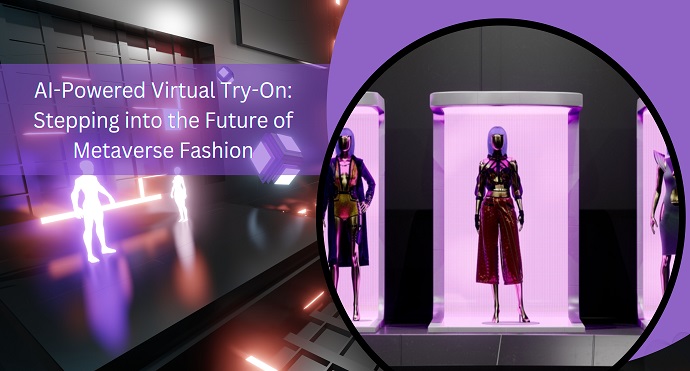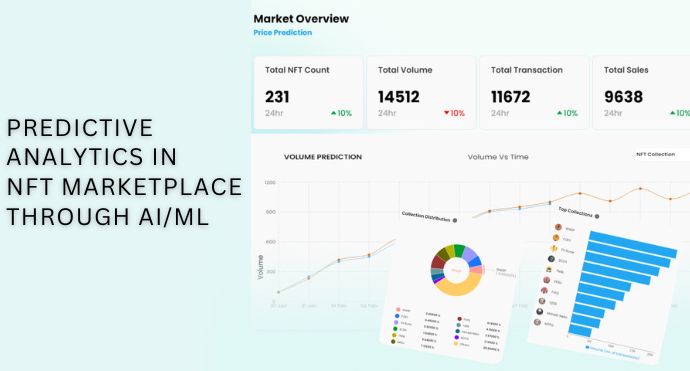Imagine a world where you stroll through a vibrant virtual mall, trying on countless outfits without ever leaving your couch. Clothes drape realistically on your avatar, responding to your movements and showcasing how they’d look in real time. This isn’t a futuristic fantasy; it’s the dawn of AI-powered virtual try-on, revolutionizing the way we shop for clothes in the burgeoning metaverse.
Gone are the days of size charts and flat, static product images. Thanks to the magic of artificial intelligence, virtual try-on technology is transforming online shopping into an immersive, personalized experience. Here’s how:
1. Say Goodbye to Guesswork:
No more wondering if that trendy top will hug your curves or that chic dress will fall at the right length. AI-powered algorithms analyze your body measurements and scan 3D garment models, creating a virtual replica that fits you like a glove. You can experiment with different sizes, styles, and colors, seeing instantly how each piece flatters your unique figure.
2. Embrace Inclusivity and Diversity:
The fashion industry has long been criticized for its narrow beauty standards. But the metaverse, with its virtual spaces, breaks free from these limitations. AI-powered virtual try-on allows everyone to see themselves represented in the latest trends, regardless of size, skin tone, or body type. Imagine a world where a petite woman can confidently rock a runway-worthy maxi dress or a plus-size man can try on that sharp power suit he’s always admired. Virtual try-on empowers everyone to embrace their individual style without feeling excluded.
3. Shop Smarter, Not Harder:
No more battling crowded fitting rooms or wasting time on returns that don’t fit. AI-powered virtual try-on lets you shop from the comfort of your home, trying on countless outfits in minutes. This not only saves you time and effort but also helps you make informed purchasing decisions, minimize returns, and boost customer satisfaction.
Real-World Use Case:
Meet Emma, a busy professional who loves fashion but hates the hassle of traditional shopping. With AI-powered virtual try-on, Emma can browse her favorite brands’ metaverse stores during her lunch break. She virtually steps into a virtual fitting room, scans her body using her phone’s camera, and starts experimenting. She tries on a flowy floral dress, a sleek jumpsuit, and even a daring leather jacket, all in the blink of an eye. The realistic 3D rendering shows her how each piece moves and drapes on her unique figure. Satisfied with her choices, Emma clicks to purchase, confident that her new clothes will fit perfectly when they arrive.
The Future is Now:
While still in its early stages, AI-powered virtual try-on is rapidly transforming the fashion industry. This technology holds immense potential to reshape how we shop, design, and even experience fashion. As the metaverse continues to evolve, virtual try-on will become an essential tool, unlocking a world of endless possibilities for both consumers and brands.
So, are you ready to step into the future of fashion? Embrace the AI-powered revolution and unlock a world of personalized style, endless possibilities, and a shopping experience that’s as unique as you are.
Informative and Specific:
1. Widespread Adoption:
- A 2023 McKinsey & Company report revealed that 89% of large companies globally are currently undergoing digital and AI transformation initiatives.
- In the fashion industry specifically, research from Quixy indicates that 95% of service-based businesses have adopted digital-first strategies. This includes major fashion brands and retailers.
2. Specific Technologies:
- Cloud technology is leading the charge, with almost 90% of organizations worldwide implementing it. This allows for easier data storage, scalability, and accessibility for AI-powered applications like virtual try-on.
- Artificial intelligence is rapidly integrating into fashion, with applications in areas like:
- Trend forecasting and design: AI algorithms analyze vast amounts of data to predict upcoming trends and even generate new design ideas.
- Personalized shopping experiences: AI-powered chatbots and virtual stylists assist customers in finding clothes that suit their preferences and body types.
- Supply chain optimization: AI helps streamline logistics and production processes, ensuring faster delivery and reducing waste.
3. Real-World Impact:
- The global market for digital transformation in the fashion industry is expected to reach $767 billion by 2026, growing at a compound annual rate of 19.48%.
- Studies show that AI-powered virtual try-on can increase conversion rates by up to 30% and reduce returns by 20%, leading to significant cost savings for brands.
- Consumers are increasingly embracing digital experiences, with 37% of them highly likely to use telehealth in the future, indicating a similar trend towards virtual shopping as technology advances.
Conclusion:
The fashion industry is undergoing a seismic shift driven by the twin forces of artificial intelligence (AI) and digital transformation. From virtual try-on revolutionizing the shopping experience to AI algorithms predicting the hottest trends, the way we design, manufacture, and consume fashion is changing rapidly.
The Numbers Don’t Lie:
- A staggering 89% of large companies globally are actively embracing digital and AI initiatives, according to a 2023 McKinsey & Company report.
- Within the fashion realm itself, 95% of service-based businesses have adopted digital-first strategies, encompassing major brands and retailers (Quixy research).
Cloud technology reigns supreme, with nearly 90% of organizations worldwide implementing it. This facilitates seamless data storage, scalability, and accessibility for AI-powered applications like virtual try-on, pictured below.
AI’s impact extends far beyond virtual mirrors. Here’s a glimpse into its diverse applications:
- Trend Forecasting and Design: AI algorithms analyze vast data sets, identifying patterns and predicting future trends with uncanny accuracy. Imagine AI not just predicting the “it” color for next season but even generating innovative design concepts.
- Personalized Shopping Experiences: AI-powered chatbots and virtual stylists assist customers in finding clothes that flatter their unique body types and preferences. Picture a virtual assistant recommending the perfect outfit for a special occasion based on your style, budget, and even the weather forecast.
- Supply Chain Optimization: AI streamlines logistics and production processes, ensuring faster delivery and reduced waste. Imagine AI optimizing inventory levels, predicting demand surges, and even suggesting sustainable manufacturing practices.
The Real-World Impact:
The global market for digital transformation in fashion is projected to reach a staggering $767 billion by 2026, growing at a remarkable 19.48% annually. AI-powered virtual try-on alone can boost conversion rates by 30% and slash returns by 20%, leading to significant cost savings for brands.
Consumers are embracing the digital shift, with 37% highly likely to use telehealth in the future. This indicates a similar trend towards virtual shopping as technology advances.
A Glimpse into the Future:
The metaverse, a burgeoning virtual world, presents another exciting frontier for fashion. Imagine owning unique digital garments as NFTs (non-fungible tokens), attending virtual fashion shows, and even customizing your avatar’s wardrobe with cutting-edge AI-designed outfits.
The future of fashion is brimming with possibilities. AI and digital transformation are not just changing the industry; they are reshaping how we express ourselves, connect with others, and even interact with the world around us. As we embrace this digital revolution, one thing is certain: the future of fashion is as vibrant, diverse, and ever-evolving as the human imagination itself.
So, buckle up and get ready for the ride! The future of fashion is here, and it’s powered by AI and digital transformation.



